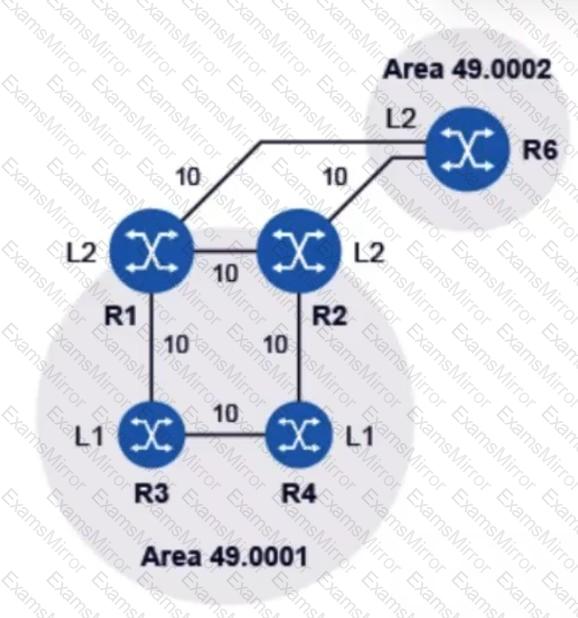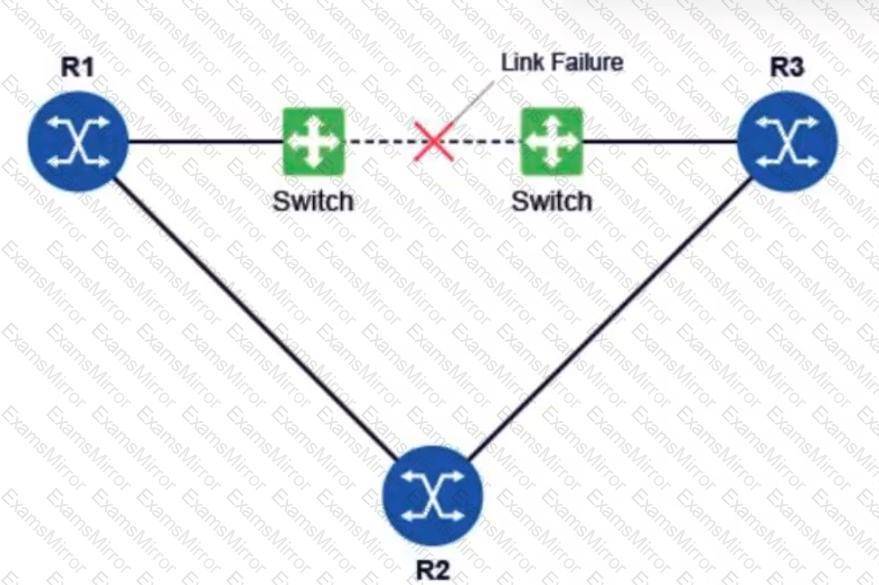Cyber Monday Special Limited Time 70% Discount Offer - Ends in 0d 00h 00m 00s - Coupon code = getmirror
Pass the Nokia Network Routing Specialist II (NRS II) 4A0-112 Questions and answers with ExamsMirror
Exam 4A0-112 Premium Access
View all detail and faqs for the 4A0-112 exam
618 Students Passed
92% Average Score
98% Same Questions

Examine the physical topology of the IS-IS network, the metrics of the links and the levels of the routers. All routers have their system interfaces included in IS-IS. Which of the following statements describes the route-table entry that router R4 will use to reach the system IP address of router R6?
On a broadcast interface, an IS-IS router receives an LSP that is newer than the one on its database. Which of the following statements best describes the actions taken by the router as a consequence?
When using IS-IS in native mode for routing in a dual-stack IPv4/IPv6 environment, which of the following statements is FALSE?
Which of the following statements about IS-IS is FALSE?
A new router is added to a broadcast network. What does IS-IS use as the tiebreaker for selecting the DIS if the priorities are the same?

In the IS-IS network shown, router R1 has been configured to summarize subnetworks 20.20.1.0/24 and 20.20.2.0/24 as 20.20.0.0/16. Which routers’ routing tables will be reduced, compared to their routing tables before the summarization?
Which of the following definitions best describes route redistribution?
A routing domain is using a single-area link-state routing protocol. Which of the following is NOT information that a router can share with other routers in the domain using protocol-specific messages?
Which component of the Nokia 7750 SR is in charge of performing the longest prefix match lookup on packets that arrive on the physical interfaces?

All routers in the diagram are running a link-state routing protocol. Before the link failure, all routers have operational adjacencies with each other and there is a BFD session between routers R1 and R3. After the link failure, which of the following affects the routing protocol’s convergence time?
TOP CODES
Top selling exam codes in the certification world, popular, in demand and updated to help you pass on the first try.
